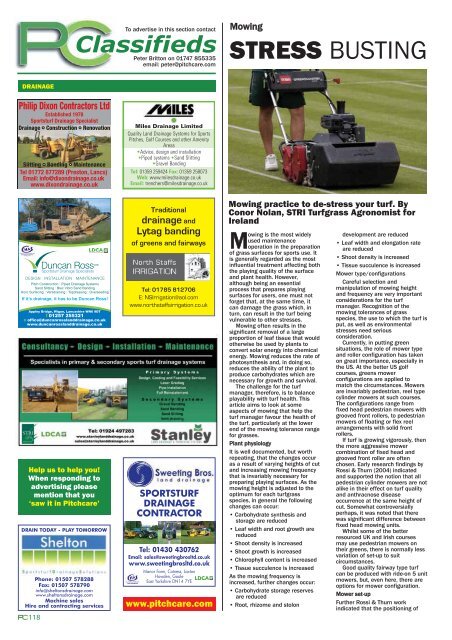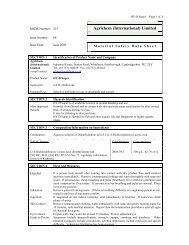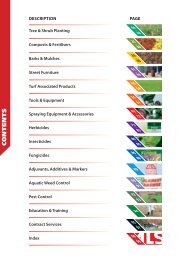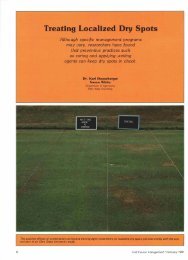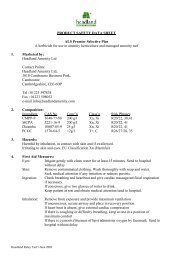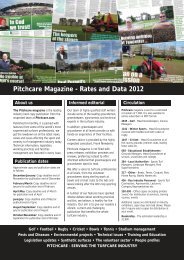Earning his Spurs - Pitchcare
Earning his Spurs - Pitchcare
Earning his Spurs - Pitchcare
Create successful ePaper yourself
Turn your PDF publications into a flip-book with our unique Google optimized e-Paper software.
DRAINAGE<br />
Philip Dixon Contractors Ltd<br />
Established 1978<br />
Sportsturf Drainage Specialist<br />
Drainage � Construction � Renovation<br />
Slitting � Banding � Maintenance<br />
Tel 01772 877289 (Preston, Lancs)<br />
Email: info@dixondrainage.co.uk<br />
www.dixondrainage.co.uk<br />
�����������������������������������<br />
�����������������������������������������������������������<br />
�������������������������������������������<br />
������������������������������������������������������������������������������������<br />
���������������������������������������<br />
����������������������������������������������������������<br />
�������������������������������������������<br />
�������������������������������������������<br />
Appley Bridge, Wigan, Lancashire WN6 9DT<br />
����������������������������������������<br />
t 01257 255321<br />
� ������������ � ������������ � �����������������������������������<br />
e�����������������������������������<br />
��������������������������������<br />
��������������������������������<br />
Help us to help you!<br />
When responding to<br />
advertising please<br />
mention that you<br />
‘saw it in <strong>Pitchcare</strong>’<br />
DRAIN TODAY - PLAY TOMORROW<br />
Phone: 01507 578288<br />
Fax: 01507 578790<br />
info@sheltonsdrainage.com<br />
www.sheltonsdrainage.com<br />
Machine sales<br />
Hire and contracting services<br />
118<br />
To advertise in t<strong>his</strong> section contact<br />
Classifieds<br />
Peter Britton on 01747 855335<br />
email: peter@pitchcare.com<br />
Miles Drainage Limited<br />
Quality Land Drainage Systems for Sports<br />
Pitches, Golf Courses and other Amenity<br />
Areas<br />
•Advice, design and installation<br />
•Piped systems •Sand Slitting<br />
•Gravel Banding<br />
Tel: 01359 259424 Fax: 01359 258073<br />
Web: www.milesdrainage.co.uk<br />
Email: trenchers@milesdrainage.co.uk<br />
Traditional<br />
drainage and<br />
Lytag banding<br />
of greens and fairways<br />
Tel: 01785 812706<br />
E: NSIrrigation@aol.com<br />
www.northstaffsirrigation.co.uk<br />
SPORTSTURF<br />
DRAINAGE<br />
CONTRACTOR<br />
Tel: 01430 430762<br />
Email: sales@sweetingbrosltd.co.uk<br />
www.sweetingbrosltd.co.uk<br />
Manor Farm, Cotness, Laxton<br />
Howden, Goole<br />
East Yorkshire DN14 7YE<br />
www.pitchcare.com<br />
Mowing<br />
STRESS BUSTING<br />
Mowing practice to de-stress your turf. By<br />
Conor Nolan, STRI Turfgrass Agronomist for<br />
Ireland<br />
Mowing is the most widely<br />
used maintenance<br />
operation in the preparation<br />
of grass surfaces for sports use. It<br />
is generally regarded as the most<br />
influential treatment affecting both<br />
the playing quality of the surface<br />
and plant health. However,<br />
although being an essential<br />
process that prepares playing<br />
surfaces for users, one must not<br />
forget that, at the same time, it<br />
can damage the grass which, in<br />
turn, can result in the turf being<br />
vulnerable to other stresses.<br />
Mowing often results in the<br />
significant removal of a large<br />
proportion of leaf tissue that would<br />
otherwise be used by plants to<br />
convert solar energy into chemical<br />
energy. Mowing reduces the rate of<br />
photosynthesis and, in doing so,<br />
reduces the ability of the plant to<br />
produce carbohydrates which are<br />
necessary for growth and survival.<br />
The challenge for the turf<br />
manager, therefore, is to balance<br />
playability with turf health. T<strong>his</strong><br />
article aims to look at some<br />
aspects of mowing that help the<br />
turf manager favour the health of<br />
the turf, particularly at the lower<br />
end of the mowing tolerance range<br />
for grasses.<br />
Plant physiology<br />
It is well documented, but worth<br />
repeating, that the changes occur<br />
as a result of varying heights of cut<br />
and increasing mowing frequency<br />
that is invariably necessary for<br />
preparing playing surfaces. As the<br />
mowing height is adjusted to the<br />
optimum for each turfgrass<br />
species, in general the following<br />
changes can occur:<br />
• Carbohydrate synthesis and<br />
storage are reduced<br />
• Leaf width and root growth are<br />
reduced<br />
• Shoot density is increased<br />
• Shoot growth is increased<br />
• Chlorophyll content is increased<br />
• Tissue succulence is increased<br />
As the mowing frequency is<br />
increased, further changes occur:<br />
• Carbohydrate storage reserves<br />
are reduced<br />
• Root, rhizome and stolon<br />
development are reduced<br />
• Leaf width and elongation rate<br />
are reduced<br />
• Shoot density is increased<br />
• Tissue succulence is increased<br />
Mower type/configurations<br />
Careful selection and<br />
manipulation of mowing height<br />
and frequency are very important<br />
considerations for the turf<br />
manager. Recognition of the<br />
mowing tolerances of grass<br />
species, the use to which the turf is<br />
put, as well as environmental<br />
stresses need serious<br />
consideration.<br />
Currently, in putting green<br />
situations, the role of mower type<br />
and roller configuration has taken<br />
on great importance, especially in<br />
the US. At the better US golf<br />
courses, greens mower<br />
configurations are applied to<br />
match the circumstances. Mowers<br />
are invariably pedestrian, reel type<br />
cylinder mowers at such courses.<br />
The configurations range from<br />
fixed head pedestrian mowers with<br />
grooved front rollers, to pedestrian<br />
mowers of floating or flex reel<br />
arrangements with solid front<br />
rollers.<br />
If turf is growing vigorously, then<br />
the more aggressive mower<br />
combination of fixed head and<br />
grooved front roller are often<br />
chosen. Early research findings by<br />
Rossi & Thurn (2004) indicated<br />
and supported the notion that all<br />
pedestrian cylinder mowers are not<br />
alike in their effect on turf quality<br />
and anthracnose disease<br />
occurrence at the same height of<br />
cut. Somewhat controversially<br />
perhaps, it was noted that there<br />
was significant difference between<br />
fixed head mowing units.<br />
Whilst some of the better<br />
resourced UK and Irish courses<br />
may use pedestrian mowers on<br />
their greens, there is normally less<br />
variation of set-up to suit<br />
circumstances.<br />
Good quality fairway type turf<br />
can be produced with ride-on 5 unit<br />
mowers, but, even here, there are<br />
options for mower configuration.<br />
Mower set-up<br />
Further Rossi & Thurn work<br />
indicated that the positioning of


